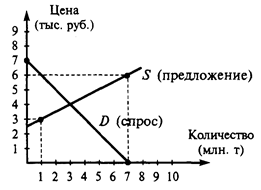Victorian London
The Victorian city of London was a city of shocking contrasts. New building and quick development went hand in hand with horribly overcrowded slums where people lived in the worst conditions imaginable. The population grew during the 19th century, from about 1 million in 1800 to over 6 million a century later. London could no longer provide for basic needs of its citizens. A combination of coal-fired stoves and poor sanitation made the air heavy and badly-smelling. Huge amount of sewage was dumped straight into the Thames River. Even royals were not immune from the stench of London - even Queen Victoria. Upon this scene entered an unlikely hero, an engineer named Joseph Bazalgette. Bazalgette was responsible for the building of over 2100 km of tunnels and pipes to divert sewage outside the city. This made a drastic impact on the death rate, and outbreaks of cholera stopped after Bazlgette's work was finished. Before the engineering triumphs of Bazalgette came the architectural triumphs of George IV 's favorite designer, John Nash. Nash designed the broad avenues of Regent Street, Piccadilly Circus, Carlton House Terrace, and Oxford Circus, as well as the transformation of Buckingham House into a palace worthy of a monarch. Just behind Buckingham Palace the Grosvenor family developed the aristocratic Belgrave Square. In 1830 land just east of the palace was cleared of the royal stables to create Trafalgar Square, and the new National Gallery sprang up there just two years later. In 1829 Sir Robert Peel founded the Metropolitan Police to handle law and order in areas outside the City proper. These police became known as "Bobbies" after their founder. The early part of the 19th century was the golden age of steam. The first railway in London was built from London Bridge to Greenwich in 1836, and a great railway boom followed. Major stations were built at Euston (1837), Paddington (1838), Fenchurch Street (1841), Waterloo (1848), and King's Cross (1850). In 1834 the Houses of Parliament at Westminster Palace burned down. They were gradually replaced by the triumphant mock-Gothic Houses of Parliament designed by Charles Barry and A.W. Pugin. The clock tower of the Houses of Parliament, known as Big Ben, was built in 1859. The origin of the name Big Ben is not clear. Prince Albert, consort of Queen Victoria was largely responsible for one of the defining moments of the era that bears his wife's name; the Great Exhibition of 1851. This was the first great world's fair, a showcase of technology and manufacturing from countries all over the world. The Exhibition was held in Hyde Park in the iron and glass hall, called the "Crystal Palace";. The exhibition was a great success, with over 200,000 attendees. The exhibits went towards the founding of two new permanent displays, which became the Science Museum and the Victoria and Albert Museum. The year 1863 saw the completion of the very first underground railway in London, from Paddington to Farringdon Road. The project was so successful that other lines soon followed. But the expansion of transport was not limited to dry land. The Thames was clogged with ships from all over the world, and London had more shipyards than anyplace on the globe. For all the economic expansion of the Industrial Revolution, living conditions among London's poor were appalling. Children as young as 5 were often set to work begging or sweeping chimneys. Campaigners like Charles Dickens did much to make the plight of the poor in London known to the literate classes with his novels, notably Oliver Twist. In 1870 those efforts bore some fruit with the passage of laws providing compulsory education for children between the ages of 5 and 12. What to See: Victoria and Albert Museum
|




